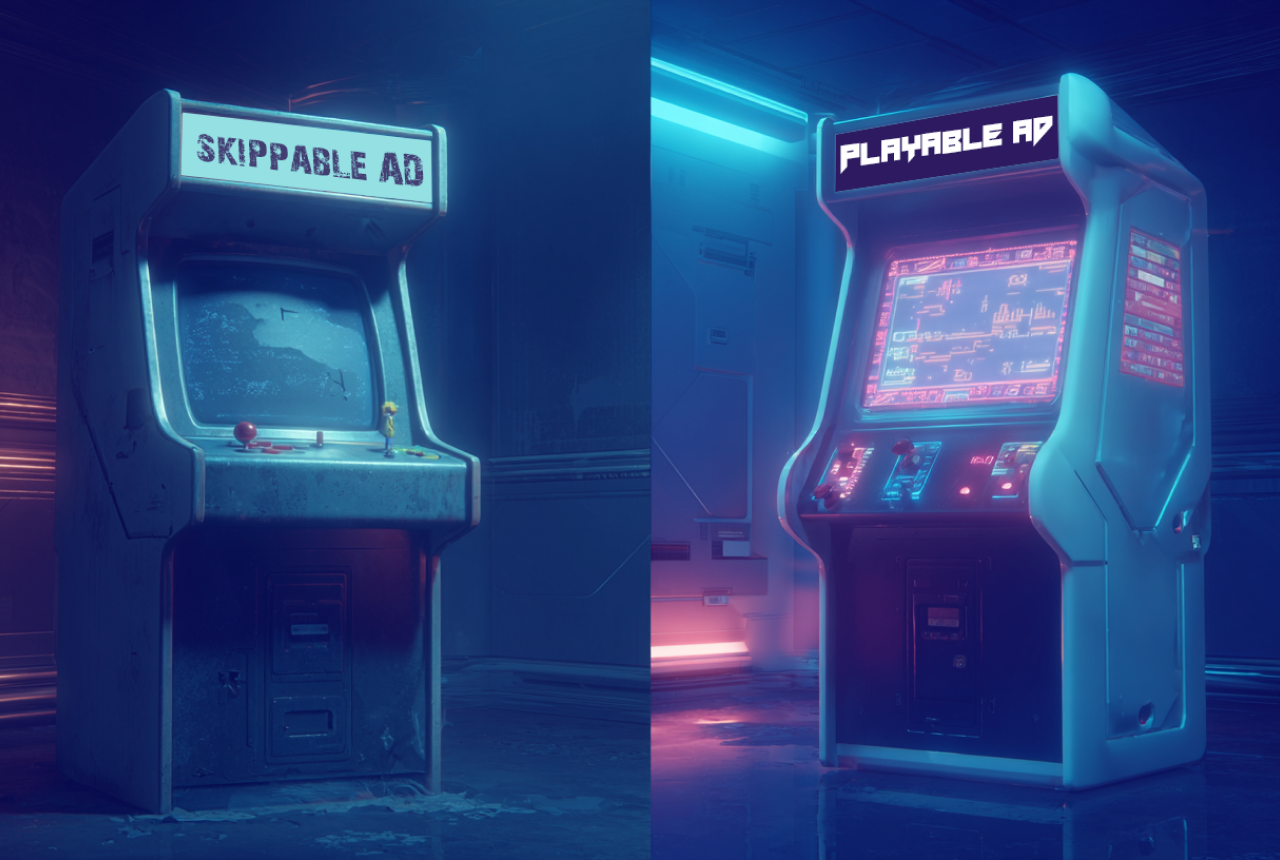In-Game Advertising
Capturing Attention in Gaming: A High-Impact Opportunity for Brands

From social to gaming—how brands can win with attention-driven advertising.
For years, brands have relied on platforms like Facebook, Instagram, X (formerly Twitter), YouTube, and TikTok to reach consumers. But there’s a growing segment of consumers who spend more time playing games—either religiously or casually—than on social media. In fact, one-third of people now spend more time gaming than scrolling through social networks, marking a very significant shift in consumer behavior.
Yet, this channel slips through the digital advertising budgeting cracks.
For brands in industries like entertainment, fast food, and consumer packaged goods (CPG), this trend matters. Data shows that mobile gamers outspend social media users by 32 percent on quick-service food and 29 percent on entertainment. "Gaming is where the future generation will spend even more time as they mature” says Giuseppe Martoriello, co-founder at iion. “It’s crucial for brands to establish a presence in games." He suggests that focusing solely on mainstream ‘walled gardens’ risks missing out on this significant gaming audience.
This untapped potential calls for brands to rethink their strategies and explore game advertising as a way to expand their reach. This opportunity was detailed at length during iion x Anzu Exclusive Roundtable; ‘The Zero-Distraction Advantage: Measuring and Maximising Attention in Gaming’, moderated by Chris James, CEO of Steel Media/Pocket Gamer and speakers Yun Yip, CCO of iion, iion co-founder, Giuseppe Martoriello, Simon Whittick, product marketing director of Anzu and Anzu’s VP Sales, EMEA, Michael Smith.
Here are 4 key takeaways discussed during the roundtable:
1.) The Attention Gap: Why gaming delivers more value.
Gaming offers a unique opportunity for brands to capture attention in ways that social media can’t match. In gaming, users are deeply engaged in distraction-free environments, which naturally increases the impact of advertising. A recent Lumen study found that gamers give significantly more attention to ads that don’t disrupt their experience, with in-game ads being viewed for an average of 3.1 seconds compared to Lumen’s digital ad norm of 2.9 seconds. This higher level of engagement means better brand recall and more meaningful interactions with consumers.
For marketers, this shift offers a critical advantage: it’s not just about impressions or clicks anymore. In a world where attention is the new currency, game advertising provides a platform where ads can command focus and drive outcomes more effectively than social media. Brands can’t afford to ignore this attention-rich environment.
2.) Gaming as a high-impact advertising channel.
Advertisers are starting to see the value in gaming, particularly when it comes to "rewarded" ad experiences. In these scenarios, users engage with an ad in exchange for in-game rewards, driving higher completion rates compared to other digital channels. Rich media and interactive ads also perform well in this space, as players are more likely to engage with content that enhances their gaming experience rather than disrupts it.
However, convincing some brands to invest in gaming has been a challenge. Many are accustomed to measuring success through traditional metrics like reach, impressions and clicks, which don’t fully capture the value of gaming ads. In the gaming space, it’s not just about visibility—it’s about attention, engagement, and, ultimately, outcomes.
3.) Maximizing brand impact through gaming.
To succeed in gaming, brands need to create immersive ad experiences that blend seamlessly into the gaming environment. Practical strategies include intrinsic in-game ads that don’t disrupt gameplay but instead add value to the experience. “The impact intrinsic in-game ads have on purchases in some sectors is very positive because of the high engagement and attention levels,” said Anzu’s Director of Product Marketing, Simon Whittick. Lumen’s CEO Mike Follett agreed, stating “[he’s] not surprised at all that it’s driving lower-funnel metrics and impacting sales.” Ultimately, this approach allows brands to connect with gamers in an authentic way that enhances the player journey.
Additionally, integrating in-game ads into broader multi-channel campaigns offers even more potential for impact. By combining game advertising with influencer partnerships, esports activations, and immersive brand experiences, marketers can amplify their message across multiple touchpoints. Gaming influencers and streamers, in particular, present an opportunity for authentic engagement that resonates with today’s tech-savvy audience.
4.) The future of attention-driven success.
As gaming continues to grow as a dominant entertainment medium, brands must adjust their media strategies to include it as a core advertising channel. “It’s not about the size of the gaming audience, it’s about the relevance,” Ashleigh Heitman, Associate Director at EssenceMediacom, emphasized. “Audiences that game are relevant to many of my products. Finding alignment requires matching the right brand with the right audience and game—with a solution that allows you to do that at ease.” The attention-heavy nature of gaming makes it an ideal environment for brands looking to stand out and make a lasting impact. But this shift requires more than just buying ad space—it calls for a deep understanding of how to leverage attention metrics and creative strategies to maximize engagement.
To make gaming a staple in their marketing efforts, brands need clear, standardized reporting metrics that demonstrate the impact of gaming ads. This will help agencies explain the value of gaming to clients who are used to traditional media metrics. Additionally, marketers need to align gaming with broader media mix models to ensure a cohesive approach that captures the full potential of this high-impact channel.
As the gaming audience continues to grow and evolve, brands that embrace the opportunities within the gaming landscape will be the ones that succeed. The message is clear: gaming is no longer just an add-on to digital campaigns—it’s a critical space for driving attention, engagement, and outcomes.








.webp)















